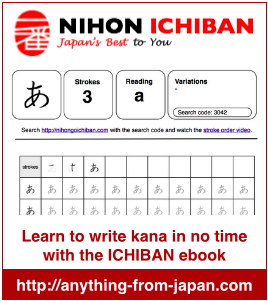This particle can be applied in three situations, where it can also be combined with the other particles から (kara) and に (ni).
1. Period:
In this case the particle まで (made) describes a period of time.
| Kanji | 会議は九時から十時までです。 |
| Furigana | かいぎはくじからじゅうじまです。 |
| Romaji | kaigi ha kuji kara juuji made desu. |
| English | The meeting lasts from 9 to 10 o’clock. |
2. Point in time:
In this case the particle まで (made) is used together with に (ni) to indicate the end of an exact point in time.
| Kanji | 会議は十時までに終わります。 |
| Furigana | かいぎはじゅうじまでにおわります。 |
| Romaji | kaigi ha juuji madeni owarimasu. |
| English | The meeting ends at 10 o’clock. |
3. Location:
In this case the particle まで (made) is used to express the time or period related to a location.
| Kanji | 東京から名古屋まではどのぐらい掛かりますか。 |
| Furigana | とうきょうからなごやまではどのぐらいかかりますか。 |
| Romaji | Tokyo kara Nagoya made wa dono gurai kakarimasuka? |
| English | How long does it take from Tokyo to Nagoya? |


I see this all the time used to mean, “too,” or, “even,” in phrases where somebody is disappointed or surprised that something/somebody is conforming to something, like “What, you too?!”
“kaigi ha kuji kara juuji made desu.” The “ha” should be “wa”.
は is read as わ in that context